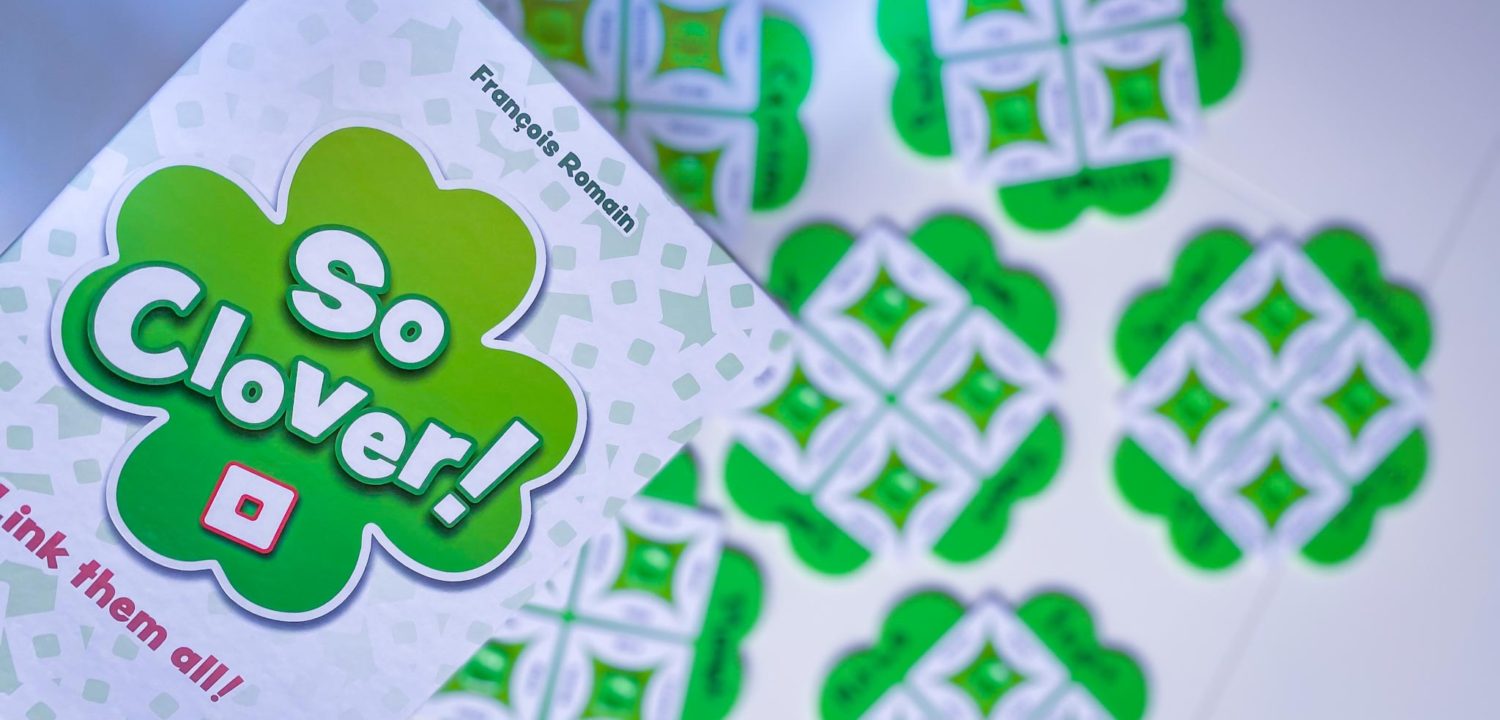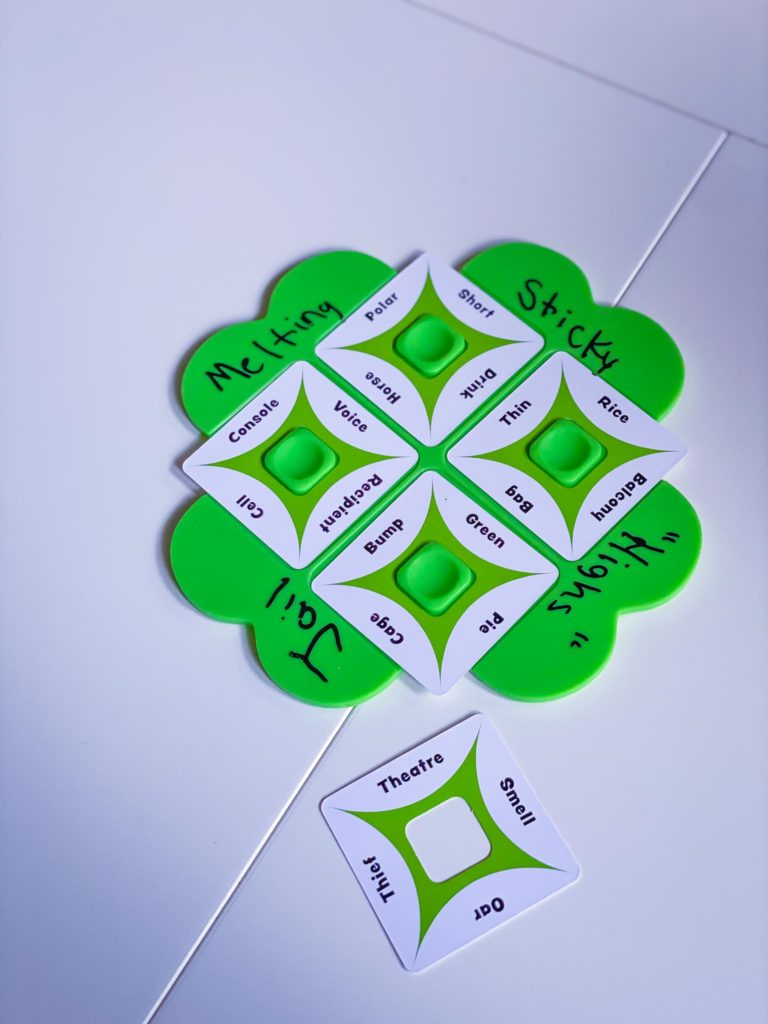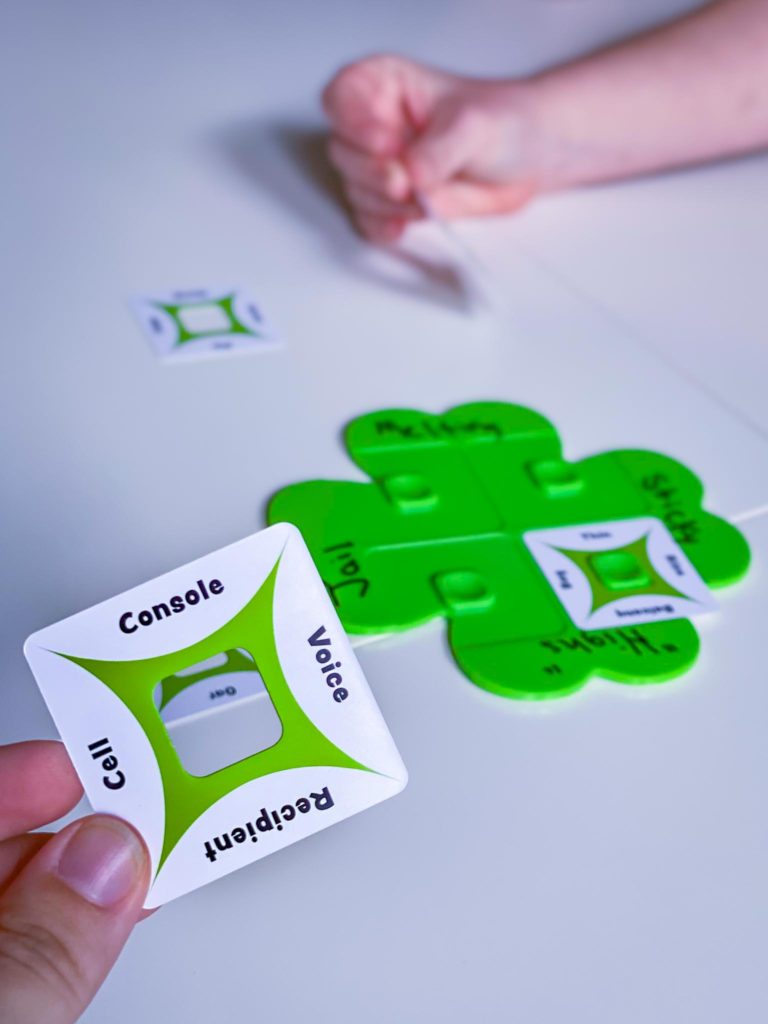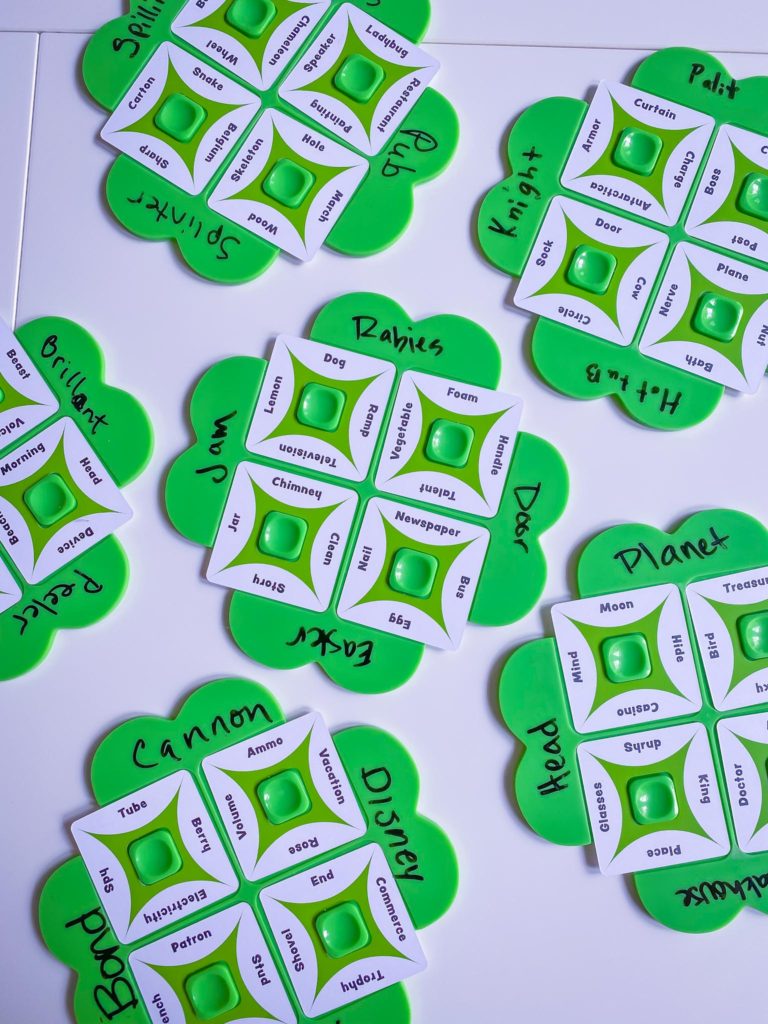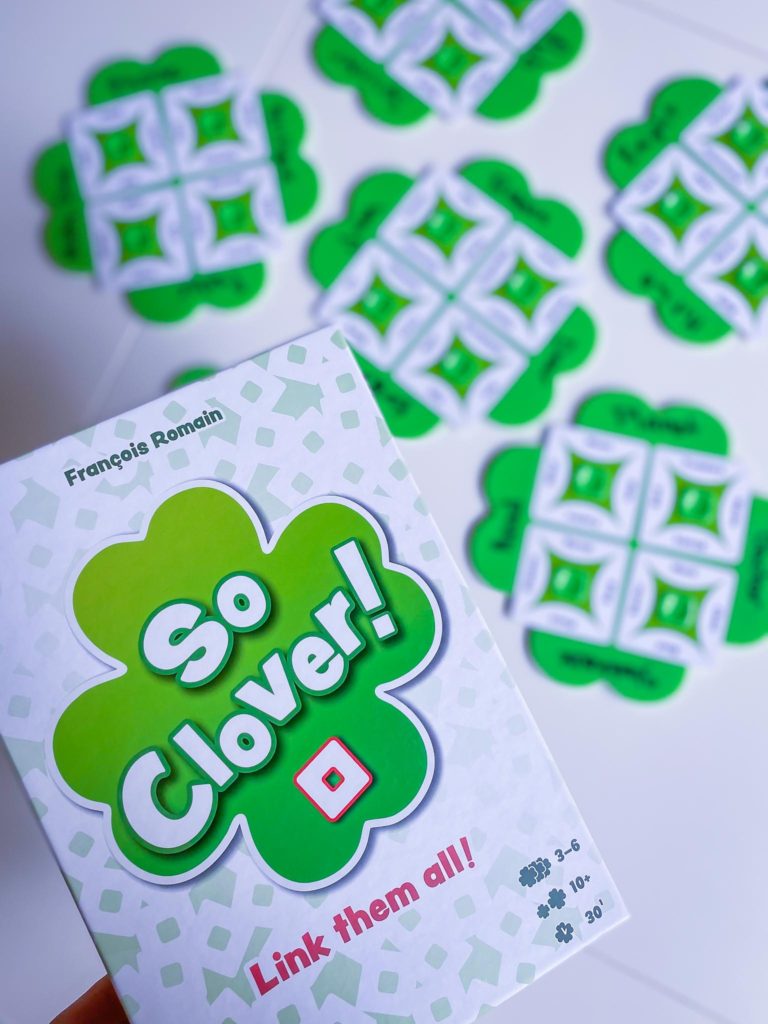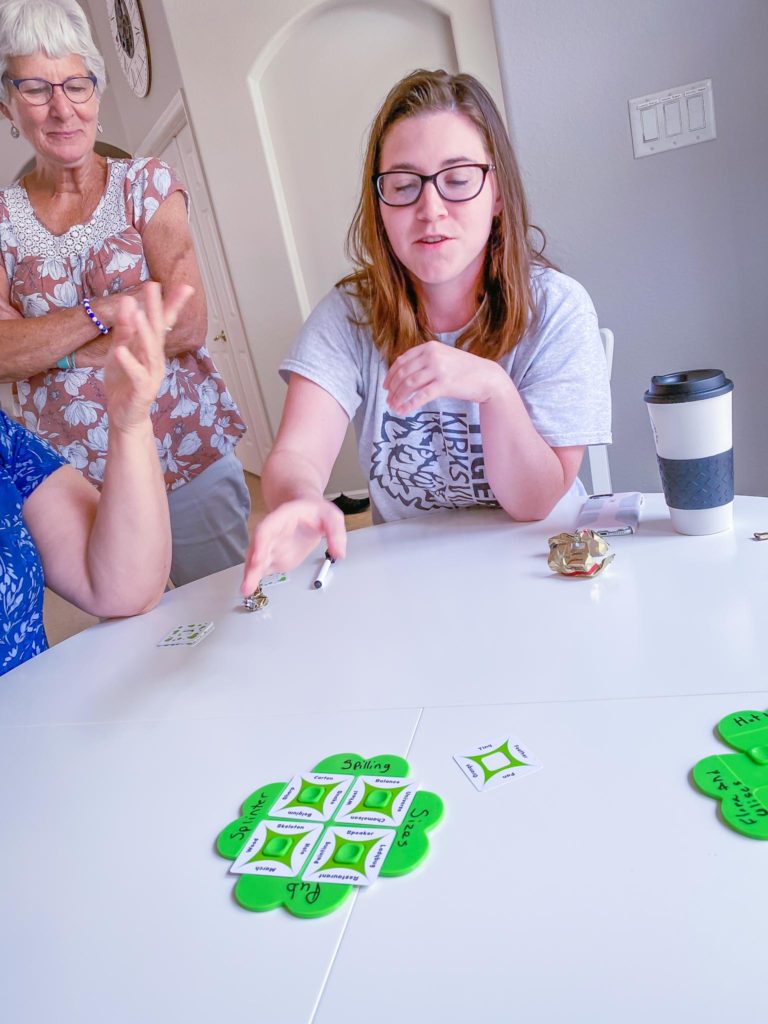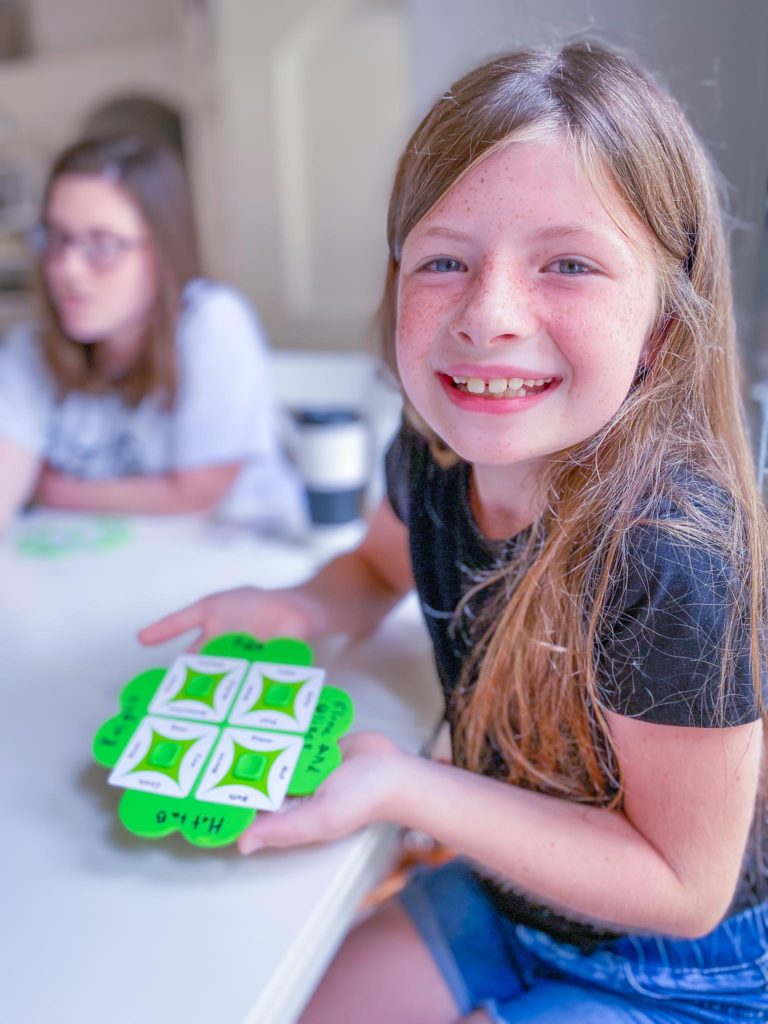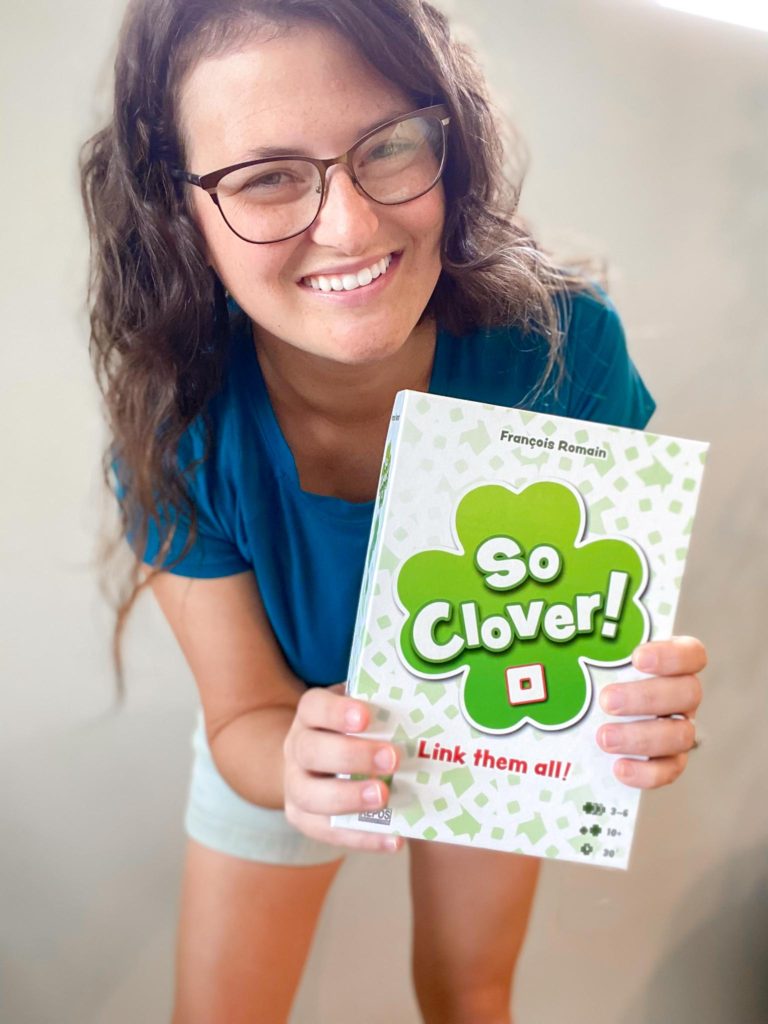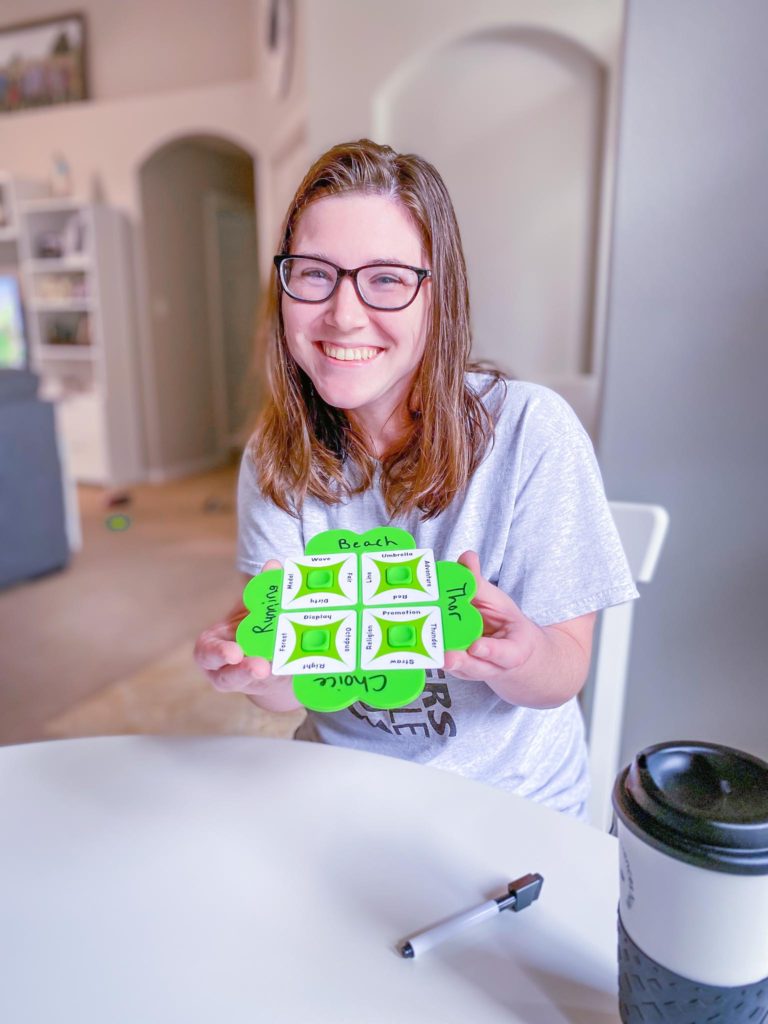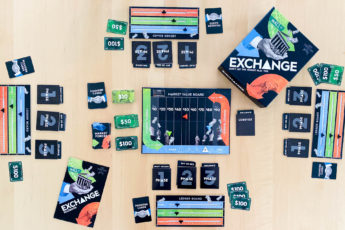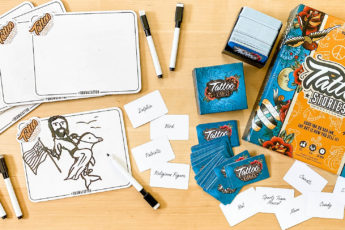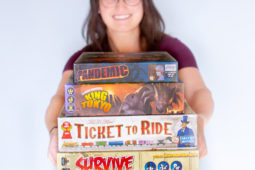So Clover! Party Game Review
So Clover is a new cooperative party game all about finding connecting words.
It’s easy to teach to anyone and has brought a ton of laughs to our table. We’re breaking down what we think it does well and where it struggles in this review!
How Do You Play?
So Clover is a cinch to learn!
Players all have a clover where they’ll place four Keyword cards in slots which which creates four sets of two Keywords in each leaf of the clover.
At the same time, players will write a single word clue that relates to or connects both of the words in the leaf. They’ll do this or each set of two Keywords around the clover.
When players have their clues written, you’ll turn your clover over to pop the cards off, add a fifth card, and shuffle them up.
Then one at a time, a player gives their clover to the group which then works together to determine where each Keyword fits around the clover.
When they think they’ve got it, the player whose clover it is looks at their results. If they’re right, the group scores 6 points — 1 for getting each side of the clover right, plus two bonus points for getting it correct on the first try. If they’re wrong, they take out the cards that do not have the words in the correct places, and the group gets one more try. They then receive 1 point for each correct card.
The game ends after all Clovers have been solved.
The group gets a team score based on how many total points they gained during the game. You can record this score in the included Record of Legends sheet so you can attempt to beat your high score in future games.
What Do We Think?
So Clover! is a game that you can play with anyone. It doesn’t matter if they enjoy board games — it doesn’t really even matter if they’re technically playing with a Clover of their own! Anyone can join in the fun and learn how to play near instantly. This is essentially a group activity and it works really well!
In many ways, So Clover feels like a mixture of Codenames and Just One, which are, in my opinion, the two of the all time greatest party games. If you like either of those games, you’re bound to enjoy So Clover!
What So Clover Does Well
Quick to Teach
This is a game you can teach in about 10 seconds. Seriously. You can teach it while passing everything out and get right to playing.
Accessible for a wide range of ages and skills.
This truly is a game you can play with anyone. It’s not even necessary that they like playing games. Everyone can have fun trying to link up the words, whether they wrote clues or are just passing by the table.
Play Happens Through Discussion
What So Clover does the best is it creates fun discussion between players. When trying to find words that fit for the clue “Door” you might quickly choose the card that says “handle” but then find the group disagrees whether the card that says “Jam” or “bus” is a better fit. “Sure, a bus has a door on it, but every door has a jamb so maybe that’s what they are going for?”
This also allows younger children the ability to play with a group of adults easier than Codenames does. It is much more accessible for a child to create a clue for two words. (Heck, to be fair, most adults can only manage a clue for two words in Codenames.) There’s also far less of a need to ever look at the other words on the cards so it’s not quite as overwhelming as Codenames can be.
For players who like open discussion and the attempt to give clever clues, So Clover is going to be a hit.
Where So Clover Falls Flat
The point system is kind of, well…pointless.
So Clover is an activity more than a game. Even when we tried to keep score, we gave up halfway through because we just didn’t care. An end score isn’t why you play. It’s the least important aspect of the fun you’ll have with So Clover.
Games Can Run Long
Discussion games can run the risk of eating up way too much time, and if you don’t keep So Clover moving at a quick pace, it’ll consume an hour quickly. Especially at higher player counts.
And that’s just to get through one round. If you’re wanting to write clues more and enjoy that element of the game, you may find that only getting to write 4 clues and then spending the whole game trying to work through everyone else’s clovers isn’t quite what you signed up for. But like most party games, So Clover is best when played with a larger group.
No tension in the game
Where I find So Clover falls the flattest is in its lack of tension. There is nothing in the game that ever creates tension that players feel — pushing them to do well or think harder. If you give the best clues on your Clover and everyone guesses it right the first time hurray, but if they don’t, oh well. We found that no one really cared either way. If you want to be done playing, feel free to say they got all the Keywords right — they’ll never know, there’s no way to check.
All that’s not to say we didn’t have fun while playing, we did! But its these elements of the game that make me think it’s just not going to have the staying power of the great ones. We’ll play So Clover this year because it’s new and its fun to share. But if it finds its way out of our collection in a few months, I won’t be surprised either.
Summary
While not perfect, So Clover is a great party game to pick up when you need some lighthearted fun. I love that you can play it with anyone, teach it near instantly, and enjoy lots of laughs with your family and friends.
To pick up a copy of So Clover, click here.
Find this and all our favorite games on our amazon storefront.
A special thanks to our friends at Asmodee for sending us a copy o So Clover! for review. As also ways our thoughts and opinions are our own.
If you liked this post you may also like:
6 Games to Try after Codenames
5 Card Games You Should Own
Great Board Games Like Ticket to Ride


